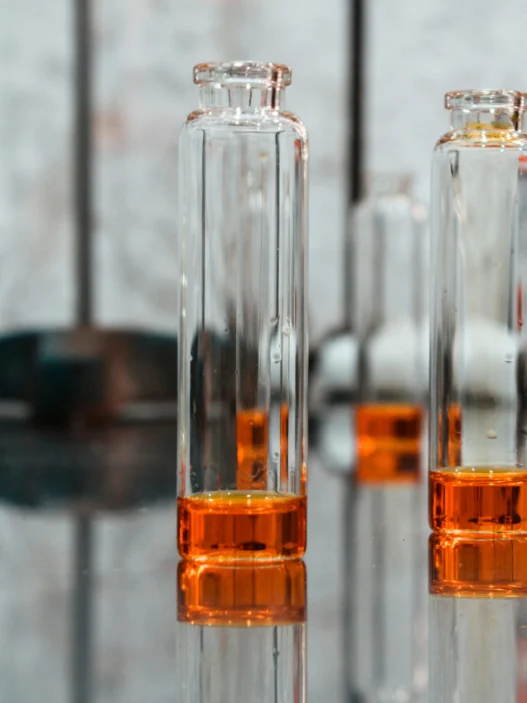D-Asparagine, a derivative of the amino acid asparagine, plays a significant role in various biological processes within the human body. Asparagine is involved in protein synthesis and serves as a key component in the transmission of nerve signals. In addition to its role in cellular functions, D-Asparagine has also been studied for its potential impact on cognitive function and mood regulation. Research on this compound may provide valuable insights into the treatment of neurological disorders and the development of pharmaceutical therapies. Overall, the study of D-Asparagine is pertinent to understanding human health and may have implications for everyday well-being.
Table of Contents:
- 💡 Commercial Applications
- ⚗️ Chemical & Physical Properties
- 🏭 Production & Procurement
- ⚠️ Safety Considerations
- 🔬 Potential Research Directions
- 🧪 Related Compounds
💡 Commercial Applications
D-Asparagine is a non-essential amino acid that has various commercial and industrial applications. It is commonly used as a food additive in the manufacturing of flavors and fragrances. D-Asparagine is often utilized as a key component in the production of artificial sweeteners and can also be found in certain cosmetics and skincare products.
In addition to its commercial and industrial uses, D-Asparagine has been studied for its potential role in drug and medication applications. Research suggests that D-Asparagine may have therapeutic benefits in the treatment of certain cancers. Its ability to influence cell growth and metabolism has led to investigations into its use as a targeted therapy for cancer patients. Furthermore, D-Asparagine has shown promise in enhancing the effectiveness of chemotherapy drugs when used in combination.
⚗️ Chemical & Physical Properties
D-Asparagine is a white, crystalline solid with no distinct odor. It is typically found as a powder or in small granules which are highly soluble in water.
The molar mass of D-Asparagine is approximately 133.1 g/mol, and it has a density of about 1.595 g/cm³. This places it in the range of molar mass and density commonly found in various food items such as sugars and amino acids.
The melting point of D-Asparagine is around 234°C, with a boiling point of approximately 381°C. These values are higher than those of many common food items, indicating a higher thermal stability compared to substances like sugars and oils.
D-Asparagine is highly soluble in water and has a low viscosity. This makes it similar to other polar amino acids and sugars, which also exhibit high solubility in water. In terms of viscosity, D-Asparagine is less viscous than oils and fats commonly found in food products.
🏭 Production & Procurement
D-Asparagine, an amino acid derivative, is typically produced through chemical synthesis in laboratory settings. This process involves the use of various reagents and catalysts to convert precursors into D-Asparagine.
Once the D-Asparagine is synthesized, it can be procured from chemical suppliers or pharmaceutical companies that specialize in amino acid production. The compound is usually available in powder form for easy handling and transportation.
In terms of transportation, D-Asparagine is often shipped in sealed containers to prevent contamination or degradation. Specialized carriers may be used to ensure the safe and efficient delivery of the compound to its destination.
⚠️ Safety Considerations
Safety considerations for D-Asparagine must be carefully understood and followed due to its potential hazards. D-Asparagine may cause skin and eye irritation upon contact, and inhalation of its dust may result in respiratory irritation. It is important to handle this substance with care, preferably wearing appropriate protective equipment such as gloves and goggles to prevent any adverse effects.
The hazard statements for D-Asparagine provide valuable information regarding its potential risks. These statements include “Causes skin and eye irritation” and “May cause respiratory irritation.” It is important to be aware of these hazards in order to take proper precautions when handling D-Asparagine to minimize the risk of harm.
Precautionary statements for D-Asparagine outline the necessary steps to ensure safe handling of this substance. These statements include “Wear protective gloves/eye protection/face protection” and “Avoid breathing dust/fume/gas/mist/vapors/spray.” Following these precautionary measures is essential to protect oneself from harm and maintain a safe working environment when dealing with D-Asparagine.
🔬 Potential Research Directions
One potential research direction for D-Asparagine involves studying its impact on cancer cells. The amino acid has been found to play a role in the growth and proliferation of certain types of cancer, making it a potentially valuable target for therapeutic interventions.
Further investigation into the metabolic pathways involving D-Asparagine could provide valuable insights into its physiological functions. Understanding how this amino acid is utilized by cells and tissues may shed light on its role in various biological processes, including protein synthesis and signaling.
Exploring the potential use of D-Asparagine as a biomarker for certain diseases could also be a fruitful area of research. By examining its levels in bodily fluids or tissues, researchers may be able to identify early indicators of certain health conditions, paving the way for improved diagnostic and treatment strategies.
🧪 Related Compounds
One similar compound to D-Asparagine based upon molecular structure is L-Asparagine. L-Asparagine is the enantiomer of D-Asparagine, meaning that it has the same molecular formula and connectivity of atoms, but a different spatial arrangement. This compound is a non-essential amino acid that plays a crucial role in protein synthesis and functions as a neurotransmitter in the brain.
Another compound similar to D-Asparagine is D-Glutamine. D-Glutamine is an amino acid that shares a similar backbone structure with D-Asparagine, but differs in the side chain group. This compound is involved in various biochemical pathways in the body, including protein synthesis, energy production, and immune function. D-Glutamine is essential for the growth and maintenance of intestinal cells and is commonly used as a dietary supplement for athletes and individuals with certain medical conditions.
One additional compound structurally similar to D-Asparagine is L-Glutamine. L-Glutamine is the enantiomer of D-Glutamine, with the same molecular formula and connectivity of atoms but a different spatial arrangement. This compound is the most abundant amino acid in the body and plays a critical role in numerous physiological processes, including protein synthesis, cell proliferation, and immune function. L-Glutamine is a conditionally essential amino acid, meaning that the body may require increased amounts during times of stress, illness, or injury.





